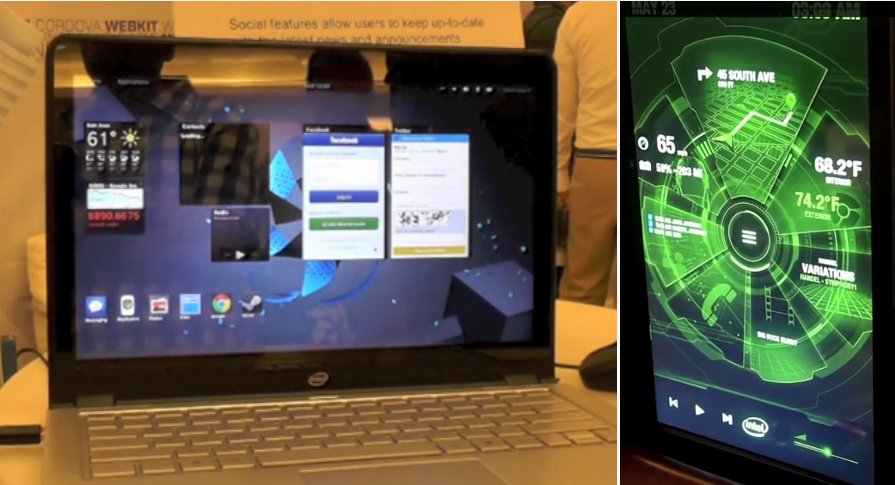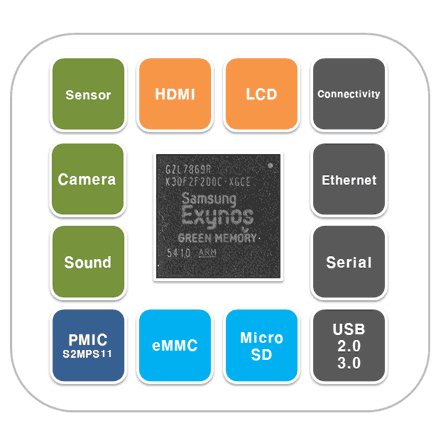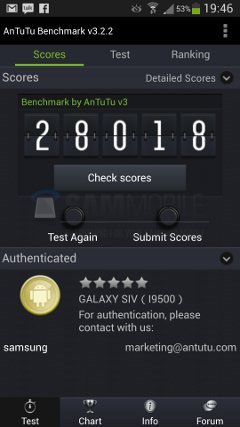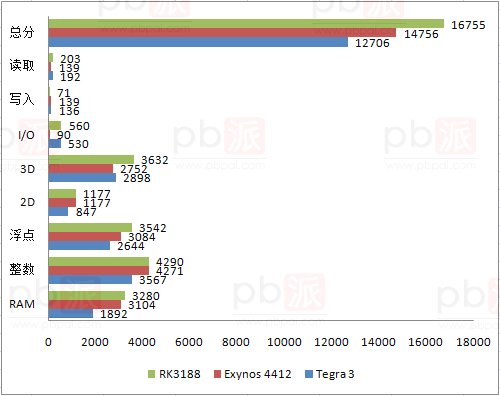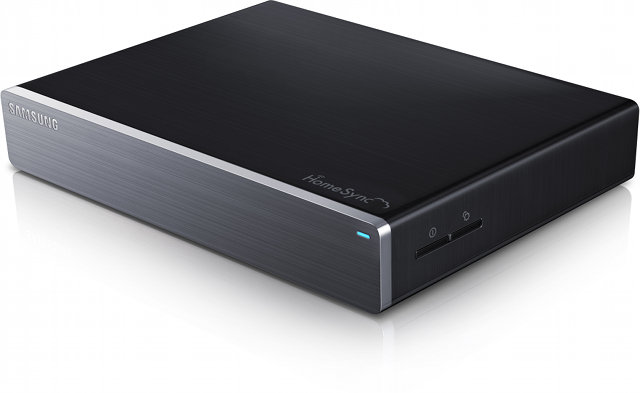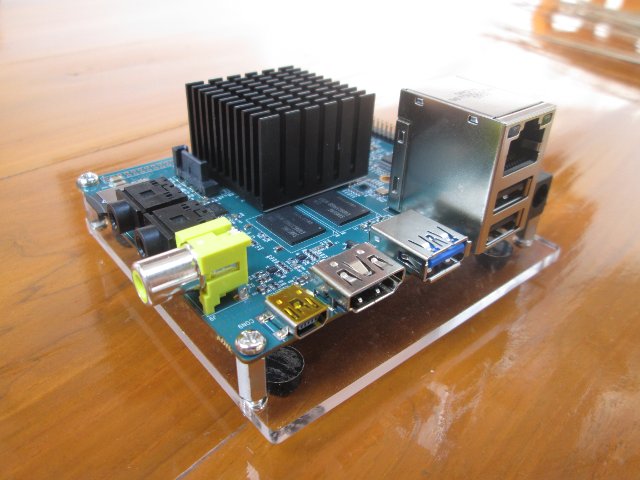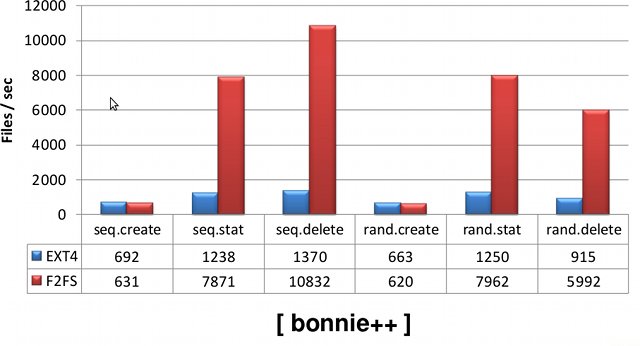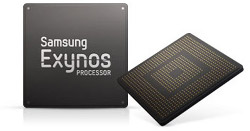I’ve seen a lot of tweets about Tizen in the last fews days, mainly because Tizen Conference 2013 just took place. First there’s been Tizen 2.1 SDK release, and few demos have surfaced, showcasing Tizen in their target devices: smartphones, tablets,smart TVs, laptops, and In-vehicle infotainment devices. Beside all the work done, the companies behind the project will also offer $4 million to developers who publish apps on Tizen store. There will be 9 categories. The best 3 games will get $200,000 each, and the best apps in the other 6 categories $120,000 each. Tizen App Challenge will start on June 3, 2013, and you can see details for this program here. Let’s see the demos. First Tizen in Samsung developer smartphone running Qt 5.1, and the usual Qt5 Cinematic Experience demo, as well as 2 others apps, both super smooth. (via TizenExperts). You can find more information in Qt […]
Arndale Octa Exynos 5410 Development Board is Now Available for Pre-order
After the Arndale board based on Samsung Exynos 5250 processor (dual core Cortex A15), Insignal is in the process of completing the development of Arndale Octa board powered by Exynos 5410 with 4 Cortex A15 and 4 Cortex A7 (aka Samsung Exynos 5 Octa), and howchip.com is now accepting “pre-orders”, at an undisclosed price, and the board is expected to ship by July. A picture of the board is not available yet, but the specifications are (sort of): ARM Cortex-A15 (eagle or big core) Quad CPU with NEON/VFP as high performance processor with 32/32KB I/D Cache, 2 MB L2 Cache. ARM Cortex-A7 (kingfisher or little core) Quad CPU as power-efficient performance processor with 32/32 KB I/D Cache, 512 KB L2 Cache. This processor is architecturally aligned with Cortex-A15 128-bit multi-layer Network-on-Chip (NoC) architecture Cache Coherent Interface (CCI) among Cortex-A15 and Cortex-A7, G2D, and SSS DRAM access through two channels of […]
Samsung Exynos 5 Octa Antutu Benchmark Results
The highly anticipated Samsung Galaxy S4 smartphone should become available later this month in three versions depending on the country where you reside: GT-I9500 – Exynos 5 Octa @ 1.6 GHz without LTE GT-I9505 – Snapdragon 600 @ 1.9 GHz with LTE SHV-E300S – Exynos 5 Octa @ 1.8 GHz with LTE GS4 will also be the first device to feature Exynos 5 Octa octo-core processor, so until people get their hands on the device, one way to know how fast it can perform is to get some benchmarks running on the devices. SamMobile received the latest Antutu benchmarks for GT-I9500, and as expected, the results are pretty impressive with a score of 28018. This score is about 19% higher than GT-I9505 (Snapdragon 600) which scores 23607 points. As usual, the detailed scores are not available which is pretty annoying, but I’d assume both the CPU, thanks to the 4 […]
Quad Cores SoC Comparison: Rockchip RK3188 vs Exynos 4412 vs Tegra 3
padhz.com compared three of the fastest Quad Core Cortex A9 processors: Rockchip RK3188, Samsung Exynos 4412, and Nvidia Tegra 3. In their detailed report (in Chinese) they compare the performance, power consumption, video play back and more. As expected, it turns out RK3188 is the best, followed by Exynos 4412, and then Tegra 3, which correspond to the inverse of their release dates. Keep reading to find the details. The Contestants Nvidia Samsung Rockchip Model Tegra 3 Exynos 4412 RK3188 CPU Cortex A9 Quad Core Cortex A9 Quad Core Cortex A9 Quad Core Process 40nm 32nm 28nm Frequency 1.3 GHz 1.4 GHz 1.6 / 1.8 GHz GPU Geforce ULP ARM Mali-400MP4 ARM Mali-400MP4 GPU Frequency 416MHz 440MHz 533 / 600 MHz GPU GFLOPS 10 17.6 24 Level 2 Cache 1MB 1MB 512KB Memory Bus 32-bit 64-bit 32-bit HW Video Decode 1080p 1080p 1080p Release date November 2011 April 2012 January […]
Samsung HomeSync Media Server Comes with a Dual Core Processor, 1TB Storage
Yesterday, Samsung announced the HomeSync, a media server featuring a dual core processor at 1.7 GHz, 1GB RAM, 8GB eMMC, and a 1TB hard drive. HomeSync is said to be running a modified version of Android Jelly Bean. Here are HomeSync specifications: Processor – Dual Core @ 1.7GHz (I’d guess it should be the Exynos 5250, but why all the mystery?) System Memory – 1GB DDR3 Storage – 8GB eMMC + 1TB HDD Connectivity LAN – Gigabit Ethernet WiFi – 802.11 b/g/n 2.4GHz & a/n 5GHz HT40 2×2 MIMO Channel Bonding Bluetooth – V4.0 USB – 2x USB 3.0 Host, 1x Micro USB (11pin) Video Output – HDMI out Audio – Optical Audio (Audio Amp. Connection) Video Codec – H.264, H.263, MPEG4, VC-1, Sorenson Spark, WMV7/8, MP43, VP8, DivX Audio Codec – MP3, AAC LC/AAC+/eAAC+, WMA 9std/10pro/Lossless, FLAC, Vorbis, AMR-NB/WB, Wav, Mid, AC-3 DRM – HDCP 1.3/2.1, Playready, Widevide, Trustzone […]
ARMBRIX Zero Cortex A15 Development Board Unboxing Pictures
I’ve just received an early sample of ARMBRIX Zero (aka ARMBRIX-5250-A), a development board based on Samsung Exynos 5250 dual cortex A15 processor with 2GB RAM, a microSD slot, 1x USB 3.0, 2x USB 2.0 Host, 1x USB Device, 10/100 Ethernet, HDMI output, SATA 3.0, some Audio I/O ports, and 3 expansions headers. This is basically a low cost version of the Arndale board, with things such as eMMC 4.5 (Sorry I’ve missed the eMMC socket at the back of the board) sensors missing. Today, I won’t turn the board on (I’ll explain why at the end of the post), but instead show some pictures of the development and debug boards. If you had previously seen the board picture before, you’ll noticed it has a grown a heatsink. The heatsink is probably here to stay, but may be slightly different (e.g. lower) when you receive your board. The bottom acrylic […]
F2FS – A New Flash File System for Mobile Devices – ELCE 2012
Joo-Young Hwang, principal engineer at Samsung, presents F2FS (Flash-Friendly File System), a new file system designed for storage in mobile devices at the Embedded Linux Conference in Barcelona, Spain, on November 5, 2012. Abstract: Recent mobile devices adopt various flash storages as a primary storage. File system support for those flash storages is a must for flash device performance and lifespan. I will present a new file system, called F2FS, designed for mobile flash storages. F2FS is designed considering the characteristics of the underlying flash storage which has flash translation layer (FTL). F2FS outperforms EXT4, which is a popular file system for Android phones, in most of benchmarks. I will describe motivation, design, and implementation of the file system, then show performance comparison data with EXT4. Target audiences are those who are interested in file system support for flash storages such as eMMC and SSD. Kernel and file system expertise […]
Samsung Exynos Octa big.LITTLE 8 Cores SoC Announced at CES 2013
Samsung Electronics unveiled the very first big.LITTLE Cortex A7/A15 SoC at CES 2013. Exynos Octa will feature 4 Cortex A15 cores together with 4 Cortex A7 cores, and make use of big.LITTLE processing to optimize energy using In-Kernel Switching (IKS), where the kernel uses Cortex A15 or Cortex A7 cores depending on the load, or Heterogeneous MultiProcessing (HMP), where different tasks are assigned to different cores, and both Cortex A15 and A7 can be used simultaneously. Check my earlier post “Big.LITTLE Processing Implementations and Current Status” for an overview on how this all works. The new Intel processors for smartphones/tablets are now very close to ARM when it comes to power consumption, and ARM may regain a clear lead thanks to big.LITTLE processing technology, which is currently shown to consume about 40% less power than equivalent tasks run on Cortex A15 (only) processors. Samsung claims it may offers up to […]


